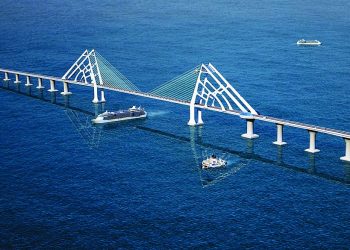Conteúdo exclusivo para assinantes. Faça a sua assinatura para ter acesso a todo conteúdo exclusivo digital.
Projeto restabelece trem de passageiros na Grande BH
Leia também
Populares
-
Consórcio aguarda aprovação para iniciar ponte Salvador – Itaparica
-
JCB lança pá-carregadeira inédita no Brasil e anuncia dobrar sua produção
-
Arcelor Mittal anuncia mais R$ 4,5 bi em expansões em MG
-
Começa construção de etapa marítima da Ponte de Guaratuba, no Paraná
-
Fachada do Allianz Parque tem corrosão zero após 10 anos
-
Seis Estados disputam nova fábrica de R$ 20 bi da Paper Excellence
-
Heineken inicia construção de fábrica em MG
-
Rodoanel deve estar completo em 2026
-
Gaslub, antigo Comperj, terá obras retomadas
-
Lançado edital de PPP do Rodoanel de BH—com aporte de R$ 5 bi
Conteúdos por categoria
- Aeroportos
- BAUMA 22
- Blog do Nildo
- Boletim técnico de MND
- CONSTRUÇÃO IMOBILIÁRIA
- CONSTRUÇÃO INDUSTRIAL
- DESTAQUES
- DESTAQUES – EDIÇÃO
- DESTAQUES DE ENGENHARIA DO ANO
- Edições
- EMPRESAS DE ENGENHARIA DO ANO
- ENERGIA
- ENTREVISTAS
- EQUIPAMENTOS E MATÉRIAIS
- EVENTOS
- EXCLUSIVO
- FERROVIA
- Fórum Infra 2024
- GESTÃO
- Hidrelétricas
- INFRAESTRUTURA
- INOVAINFRA
- INOVAINFRA 2022
- INOVAINFRA 2023
- INVESTIMENTOS E OBRAS
- LICITAÇÕES
- Mineração
- Mulheres no Canteiro de obras
- OBRAS EM ANDAMENTO
- ÓLEO E GÁS
- Palavra do Gerente de Obras
- PORTOS
- Prêmio "Distinção de Engenharia de Infraestrutura"
- PROJETOS
- RANKING DA ENGENHARIA
- RODOVIAS
- SANEAMENTO
- SUSTENTABILIDADE
- TECNOLOGIA
- TRANSPORTE
- ÚLTIMOS DESTAQUES
- VAGAS E CONCURSOS
- VIDEOS
Contate-nos
Comercial: comercial@revistaoe.com.br
Redação: oempreiteiro@revistaoe.com.br
Assinaturas: circulacao@m3editorial.com.br






